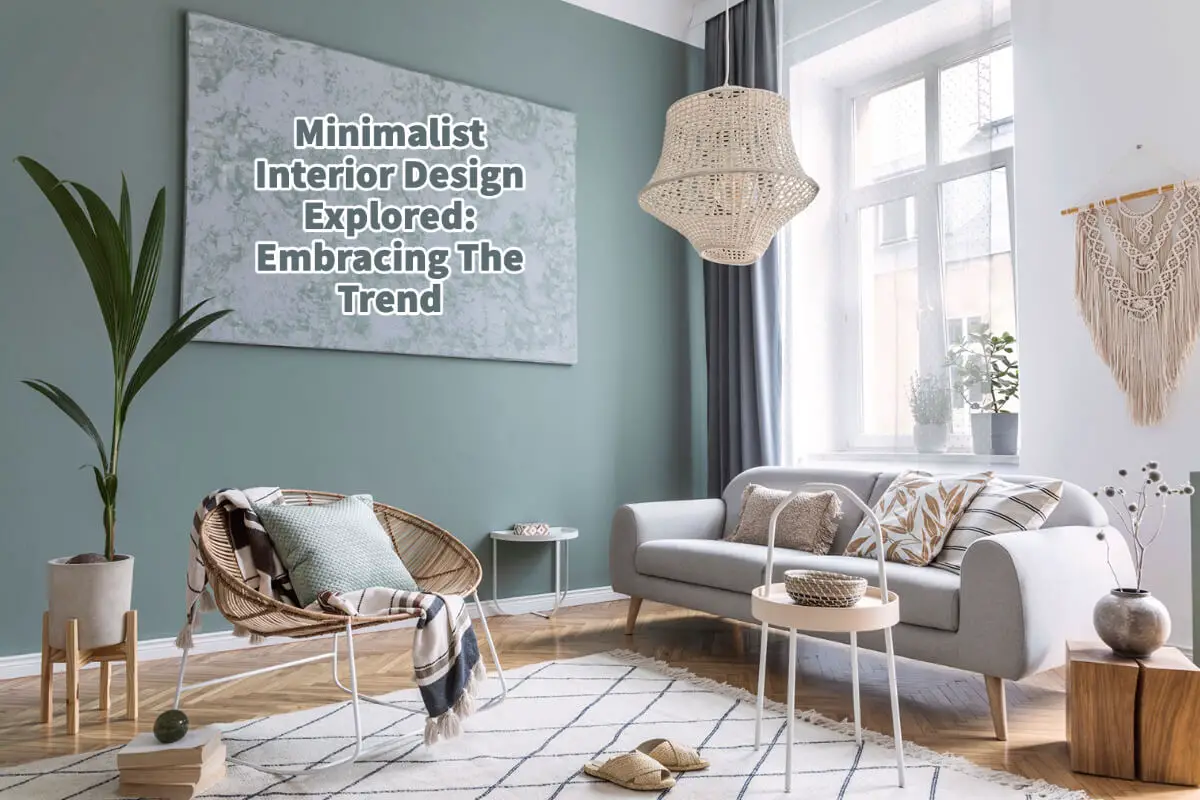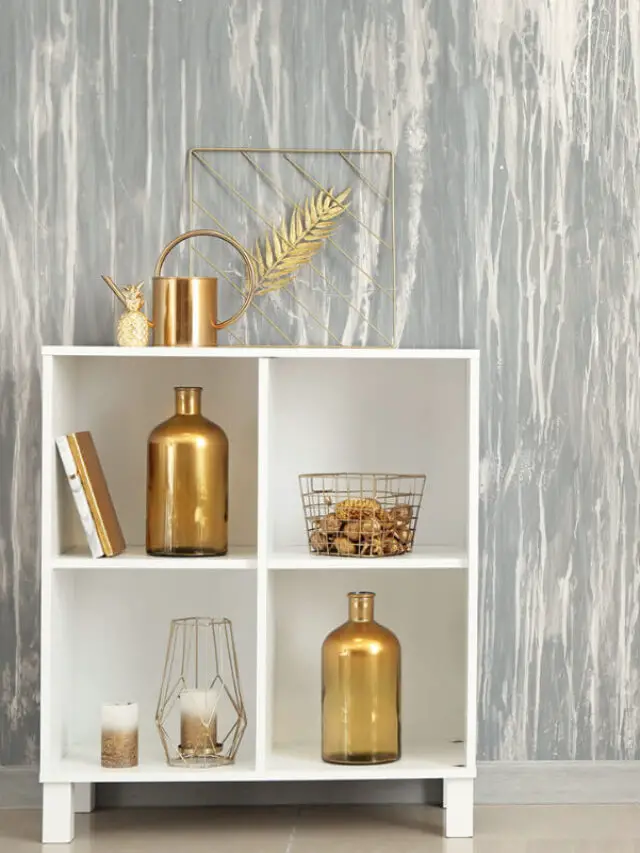Interior design, like fashion, is cyclic, swinging between extremes: lavish extravagance and understated simplicity. Of late, Minimalist Interior Design has gained traction, appealing to those who appreciate a clean, streamlined aesthetic.
For quite some time, we’ve been dwelling in a society driven by excess, where more is often equated with better. However, the trend of minimalism stands in stark contrast to this ethos. Emphasizing the philosophy of ‘less is more,’ minimalism endorses choosing quality over sheer quantity. It encourages us to create interior spaces with an air of simplicity and tranquility rather than overwhelming opulence and clutter.
Table of Contents
- Minimalist Interior Design Trend Explored: Embracing Simplicity, Functionality, And Beauty
- 15 Fundamental Aspects Of Minimalism Interior Design Trend Explored
- Simplicity And The Minimalism Trend
- Functionality And Minimalism
- Clean Lines And Minimalism
- Monochromatic Color Palettes
- Natural Light And Minimalism Interiors
- Quality Over Quantity With Minimalism
- Negative Space Is Important In Minimalism
- Texture Play And Minimalism
- Natural Materials And Minimalism
- Harmony And Balance’s Importance In Minimalism
- Minimal Decor
- Transparent Materials And Reflective Surfaces
- Soft Furnishings And Minimalism
- Streamlined Storage And Minimalism
- Open Floor Plan And Minimalism Spaces
- Watch Our Short Stories About Minimalist Interior Below!
- 6 Tips To Help You Embrace The Minimalism Trend
- Related Content
Minimalist Interior Design Trend Explored: Embracing Simplicity, Functionality, And Beauty
Minimalist design, born from the post-World War II Western art movement, takes the “less is more” approach, promoting simplicity and functionality over superfluous elements. In interior design, minimalism goes beyond aesthetics; it encapsulates a lifestyle that seeks harmony through simplicity and order.
The essence of minimalist interior design lies in its simplicity—simple forms, clean lines, minimal ornamentation, and a limited color palette. But simplicity does not imply sterility; minimalism celebrates the beauty in simplicity and order, focusing on the essentials to create tranquil, uncluttered spaces that exude serenity and sophistication.
15 Fundamental Aspects Of Minimalism Interior Design Trend Explored
Let’s delve into 15 fundamental aspects of minimalist interior design and understand how they contribute to its ethos.
Simplicity And The Minimalism Trend
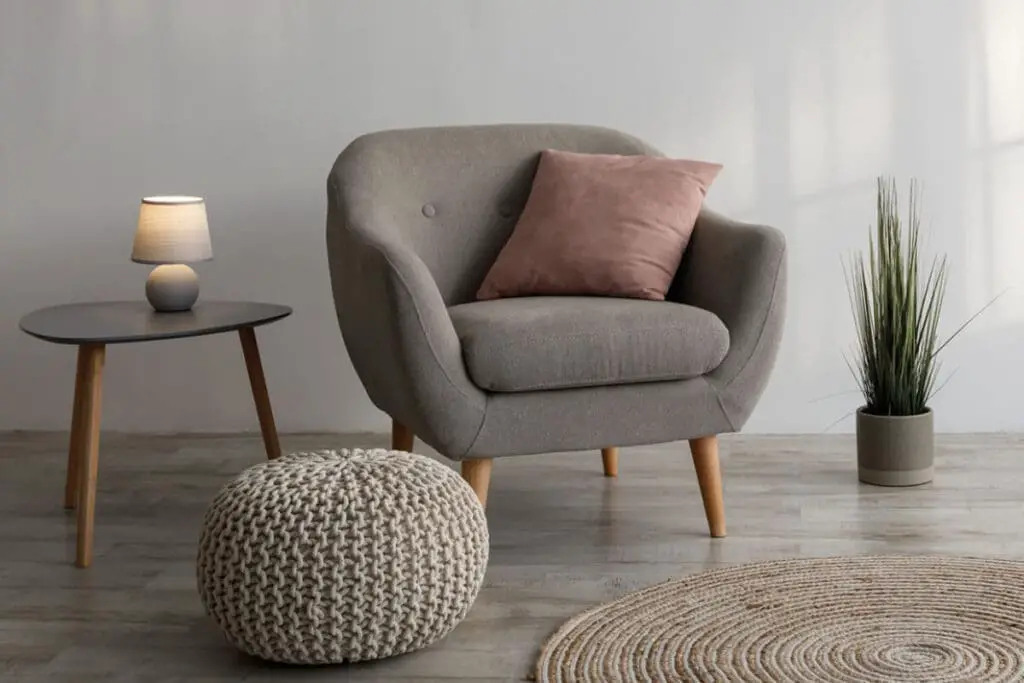
The critical principle of minimalism is simplicity—stripping down to the essential elements. This means keeping only what is necessary and removing excess furniture, decor, and clutter.
Functionality And Minimalism
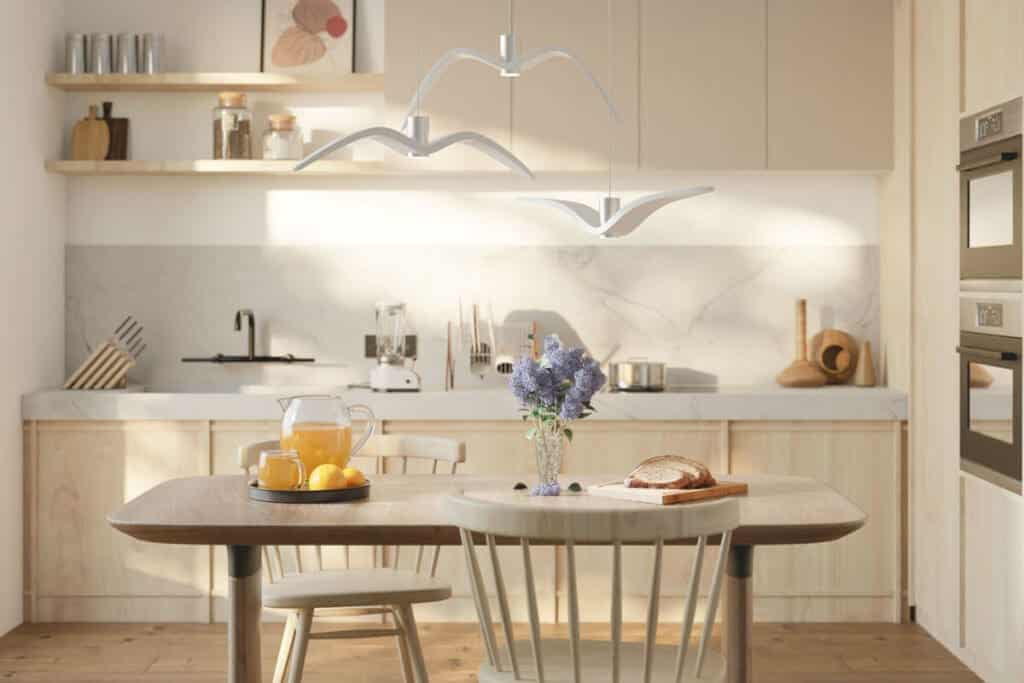
Every item in a minimalist interior must serve a purpose, making functionality a top priority. Storage is cleverly integrated to keep clutter at bay, and furniture pieces are chosen for their form and function.
Clean Lines And Minimalism
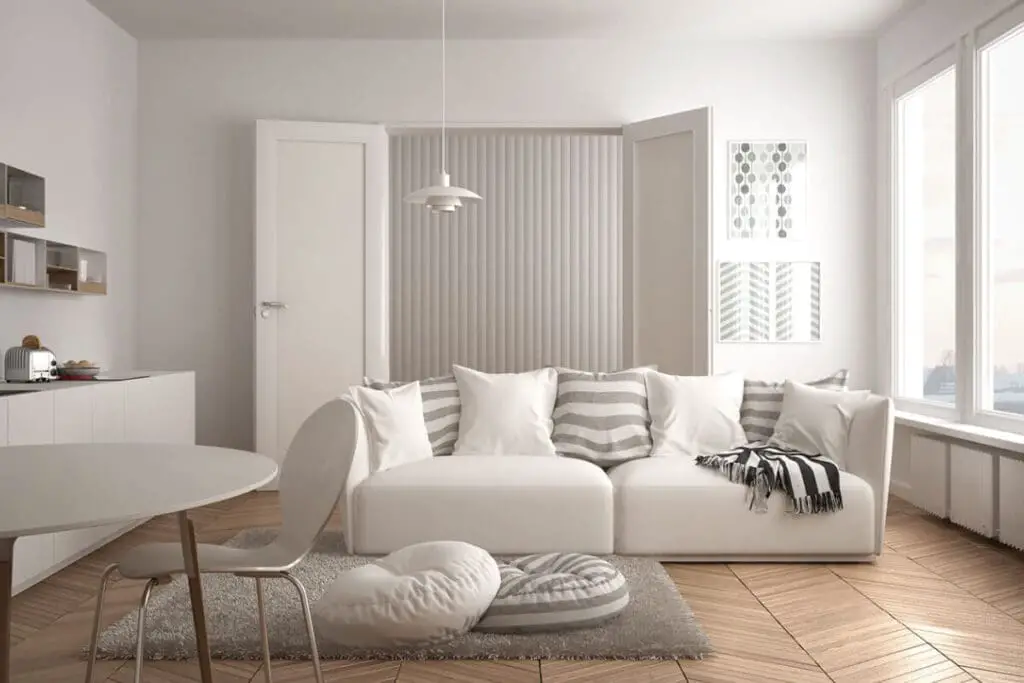
Minimalist design favors clean, crisp lines and simple geometric forms. Furniture with sleek silhouettes, linear designs, and straightforward construction embodies the minimalist aesthetic.
Monochromatic Color Palettes
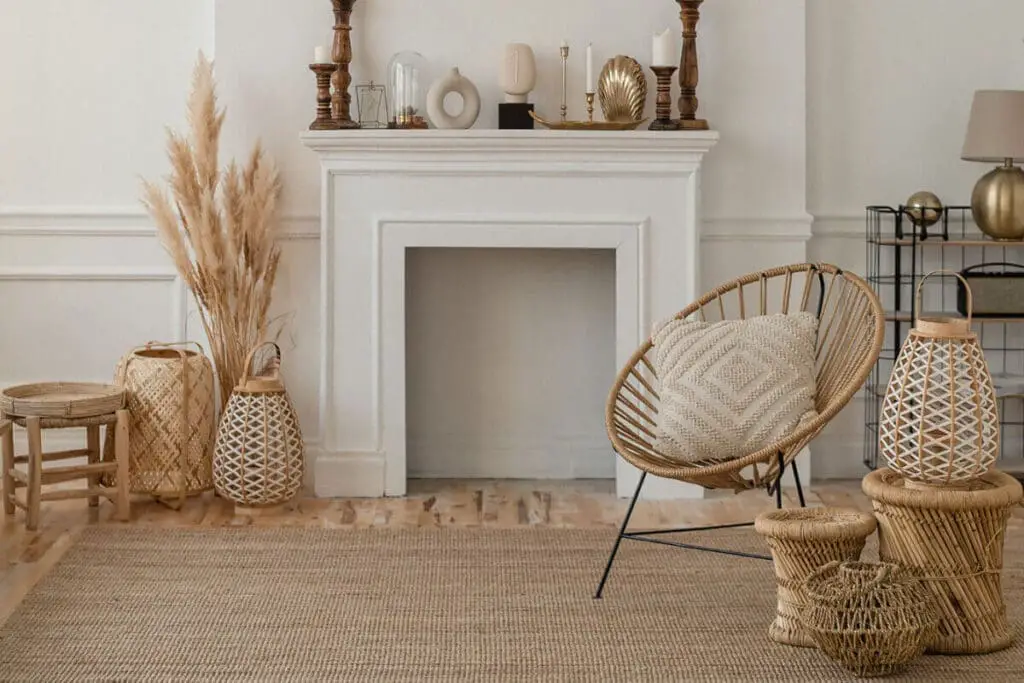
A minimalist interior typically features a restrained color palette. Shades of white, neutrals, and monochrome are commonly used, with occasional splashes of color or natural materials for visual interest.
Natural Light And Minimalism Interiors

Ample natural light is a vital element of minimalist design, enhancing the sense of spaciousness and openness. Large windows, skylights, and doors allow light to flood in, reducing the need for artificial lighting.
Quality Over Quantity With Minimalism
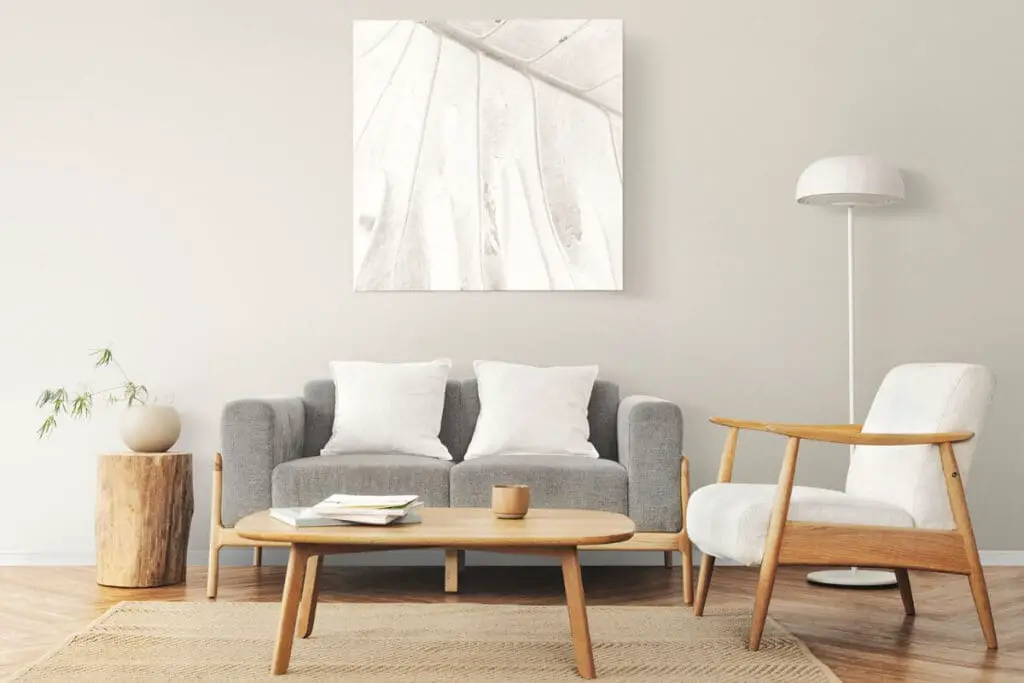
Instead of overcrowding the space with many items, minimalism favors fewer but high-quality pieces that add value and serve a practical purpose.
Negative Space Is Important In Minimalism
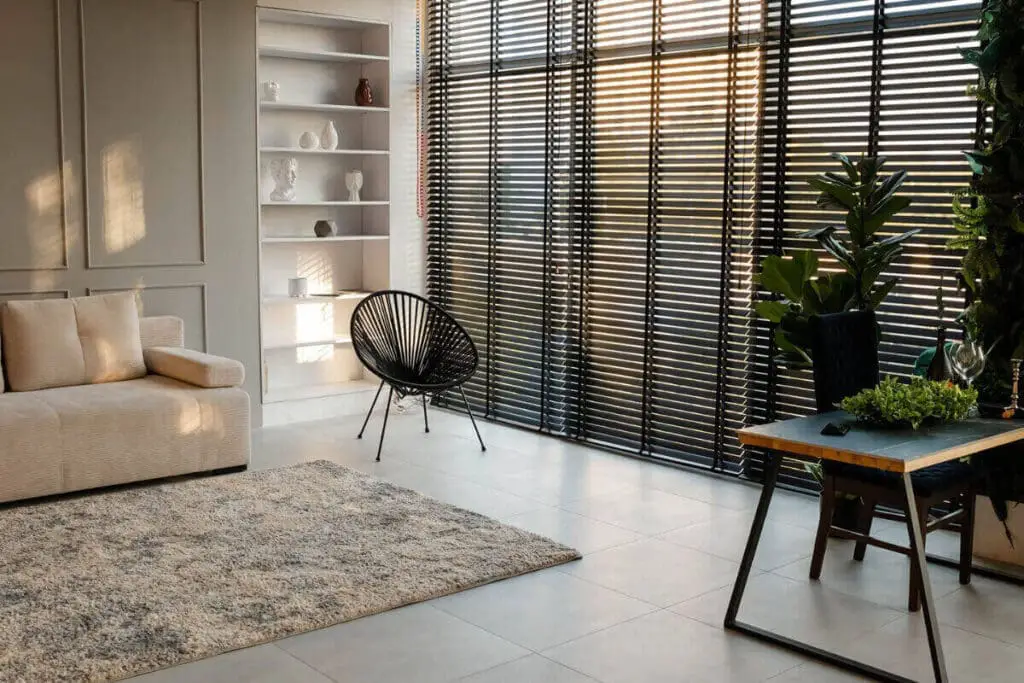
In minimalism, space or “negative space” is as crucial as the areas filled with objects. This concept emphasizes the idea that spaces should not be filled for the sake of it but instead allowed to breathe.
Texture Play And Minimalism
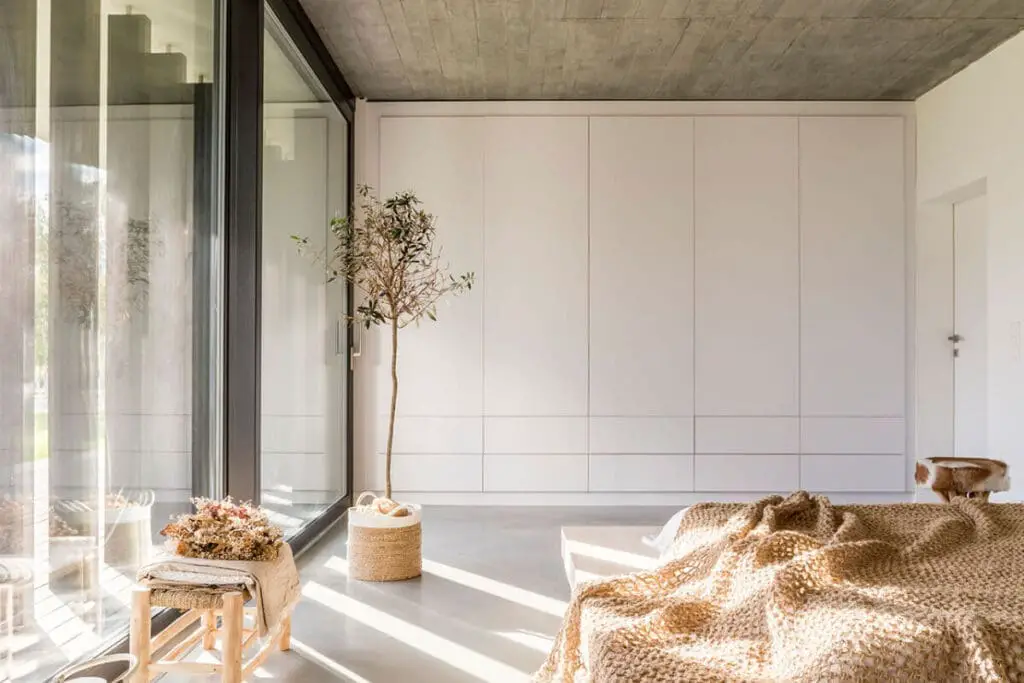
With limited color and decor, the texture becomes essential to add depth and warmth. Contrasting textures create visual interest, from smooth marble countertops to soft wool rugs.
Natural Materials And Minimalism
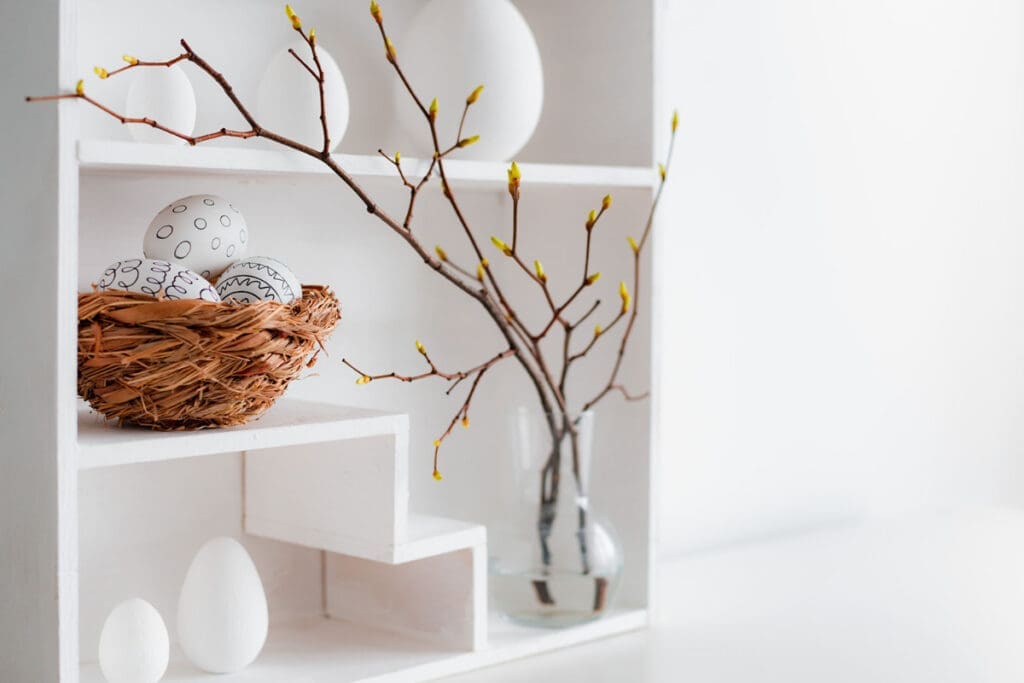
Minimalist design often showcases natural materials like wood, stone, and glass. These materials reflect a sense of honesty and authenticity, aligning with the minimalist principle of simplicity.
Harmony And Balance’s Importance In Minimalism
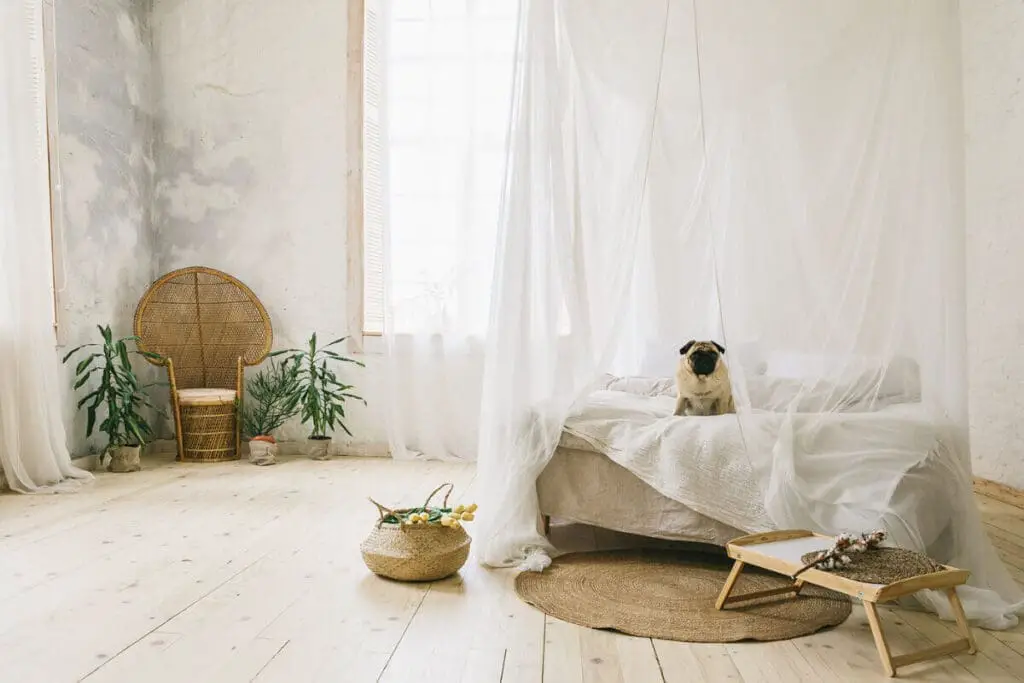
Balance and symmetry play crucial roles in achieving a minimalist aesthetic. Maintaining equilibrium is critical, whether it’s furniture arrangement or the use of color and texture.
Minimal Decor
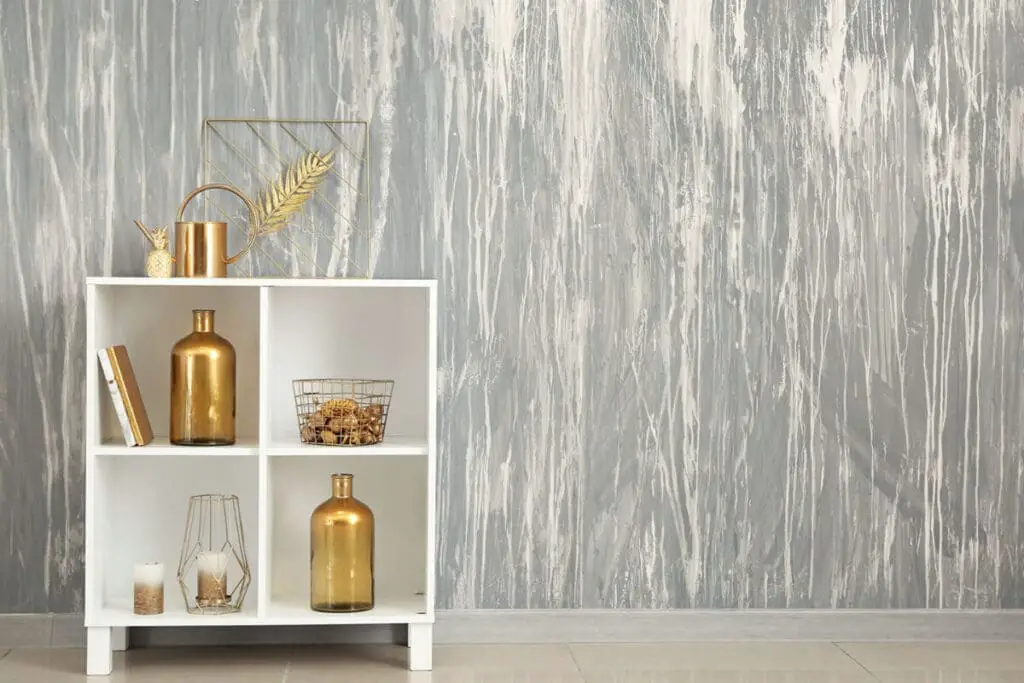
The decor in a minimalist interior is pared down. Artwork or decor items, when used, are chosen thoughtfully and typically make a statement.
Transparent Materials And Reflective Surfaces
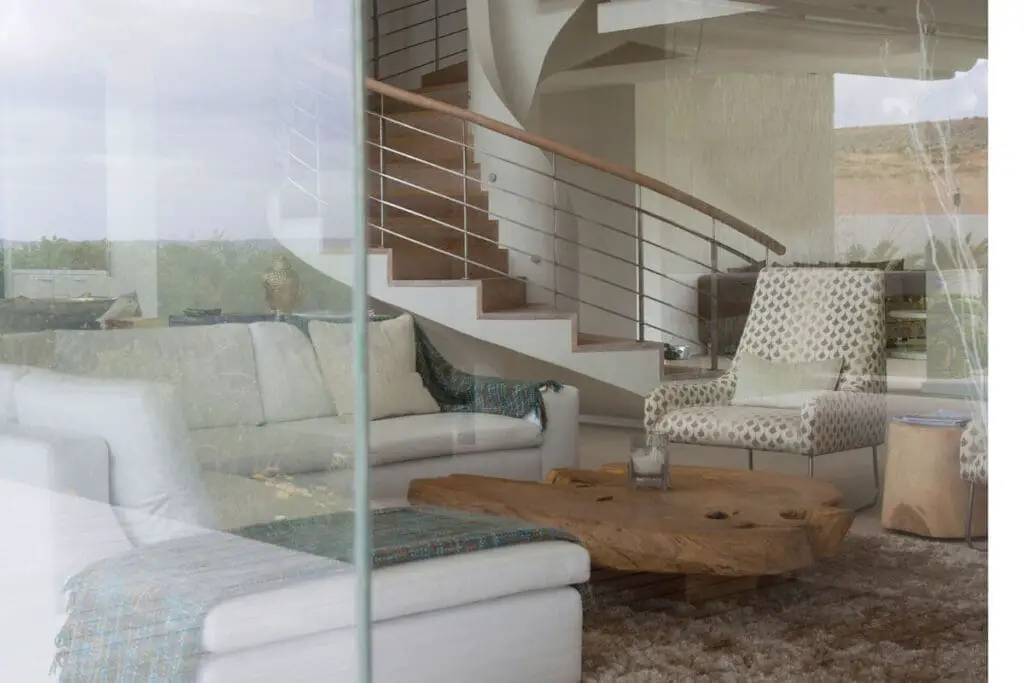
Transparent materials and reflective surfaces help to maintain a sense of lightness and spaciousness. Glass furniture pieces, mirrors, and polished metal accents contribute to this effect.
Soft Furnishings And Minimalism
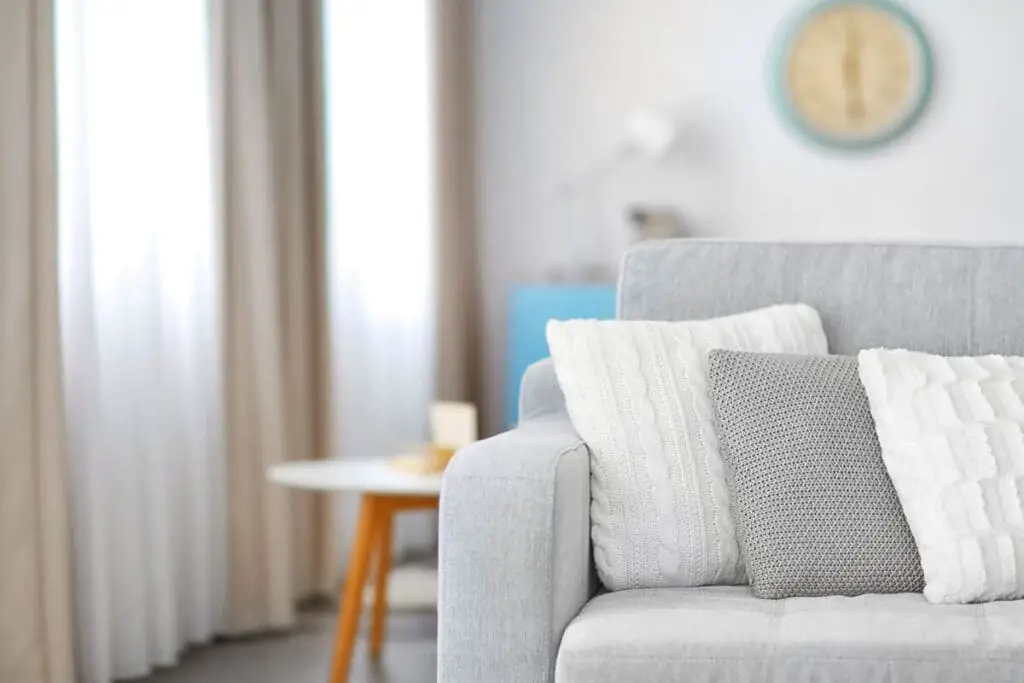
Soft furnishings are minimal and typically feature neutral colors and simple designs. Cushions throws, and rugs add comfort without overwhelming the space.
Streamlined Storage And Minimalism
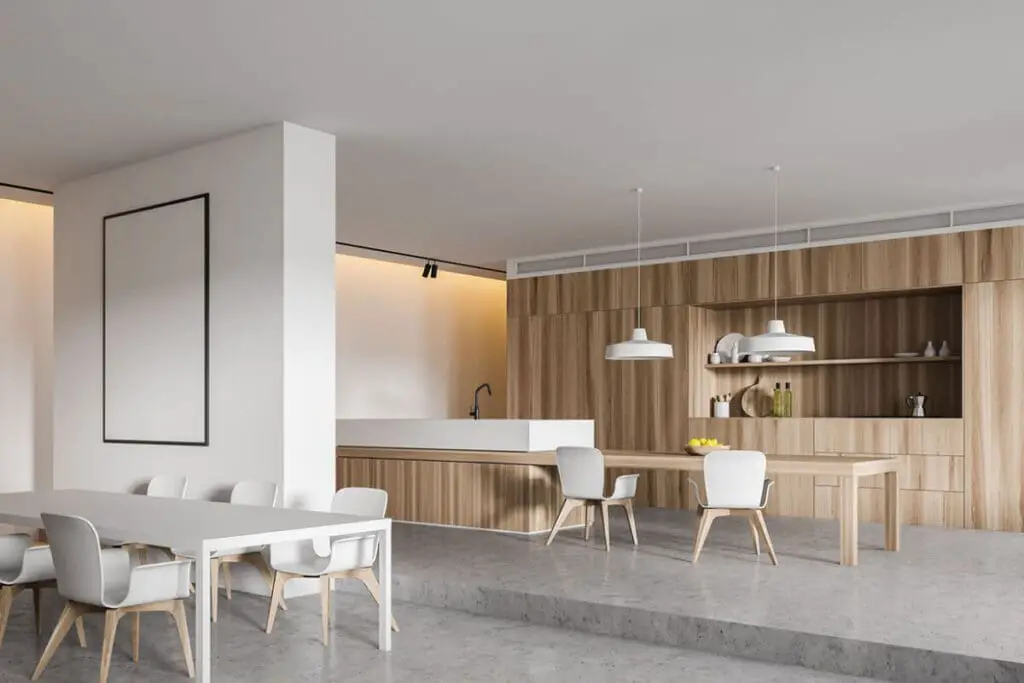
Clutter is a big no-no in minimalist design. To avoid it, storage is integrated seamlessly into the design. Think built-in wardrobes, under-bed storage, and multi-functional furniture that keeps everyday items out of sight.
Open Floor Plan And Minimalism Spaces

Minimalist interiors often feature open floor plans, promoting flow and a sense of spaciousness. This layout, with a restrained color palette and ample natural light, helps to create a serene, airy atmosphere.
Incorporating minimalist interior design into your home may seem daunting, especially if you’re used to living with many things. However, the transition can be made gradually, and the benefits – a serene, clutter-free, and stylish home – are worth the effort.
Watch Our Short Stories About Minimalist Interior Below!
6 Tips To Help You Embrace The Minimalism Trend
If you are a fan of the minimalism trend as we are, there are steps you can take to embrace minimalism for your own home or space.
Here are some tips on how to embrace minimalism in your home:
Declutter Your Space
Begin by getting rid of unnecessary items. Keep only those things that serve a practical purpose or hold significant aesthetic or emotional value.
Choose Quality Over Quantity
Invest in a few high-quality pieces of furniture that combine style with functionality. A well-made, stylish couch, a sturdy dining table, or a comfortable bed can be focal points in minimalist interiors.
Use A Restrained Color Palette
Opt for a color palette of two to three shades. Neutral shades like white, beige, and grey work best for a minimalist aesthetic.
Maximize Natural Light
Allow as much natural light into your home as possible. Avoid heavy drapes or window coverings; opt for sheer curtains or blinds.
Keep Decor To A Minimum
Decor should be kept to a minimum in minimalist interiors. Choose one or two statement pieces, such as artwork or a mirror, and avoid cluttering surfaces with knick-knacks.
Incorporate Plenty Of Storage
To keep clutter at bay, ensure you have ample storage. Look for furniture with built-in storage or use clever solutions like ottomans with storage space or beds with drawers underneath.
Minimalism isn’t about creating a cold, impersonal space. It’s about paring down to the essentials and finding beauty in simplicity and functionality. It encourages you to create a home that reflects serenity and provides a sense of calm – a haven in a chaotic world. So, take a deep breath, and take the first step towards embracing minimalism – you won’t regret it.
Find out more about how Mondoro can help you create, develop, and manufacture excellent home decor and furniture products – don’t hesitate to contact me, Anita. Check out my email by clicking here or become a part of our community and join our newsletter by clicking here.
Mondoro gives out a FREE Lookbook to anyone interested. You can receive a copy of our latest Lookbook by clicking here.
Listen to our Podcast called Global Trade Gal. You can find it on all major podcast platforms. Try out listening to one of our podcasts by clicking here.
Subscribe to our Mondoro Company Limited YouTube Channel with great videos and information by clicking here.
Related Content
Home Interior Mirror Ideas, Manufacturing Home Decor Mirrors
Many Interior designers use mirrors to help them with their decorating. This is because a mirror can become a design focal point for any room. A mirror can help brighten a dark space and make a room look larger.
You can learn more by reading our blog, Home Interior Mirror Ideas, Manufacturing Home Decor Mirrors, by clicking here.
How To Manufacture Vietnamese Lacquerware?
Vietnamese lacquer requires many manufacturing steps in the lacquer production process, including making the base, preparing the lacquer base to be applied, and finally applying the lacquer paint onto the surface. Every piece must be carefully sanded to give it a very smooth surface. Vietnamese lacquerware production requires a lot of skill and knowledge.
To learn more, you can read How to Manufacture Vietnamese Lacquerware? An Insider’s Guide to Lacquer by clicking here.
What Is Gold Leafing Used In Home Decor Products?
The gold leaf is hammered gold. Some gold leaf manufactured today is hammered copper or gold mixed with other metals and alloys. The gold leaf is manufactured by gold beating. Gold beating is beating or pressing the gold into fragile sheets of paper.
You can discover more by reading What is Gold Leafing Used in Home Decor Products? by clicking here.

